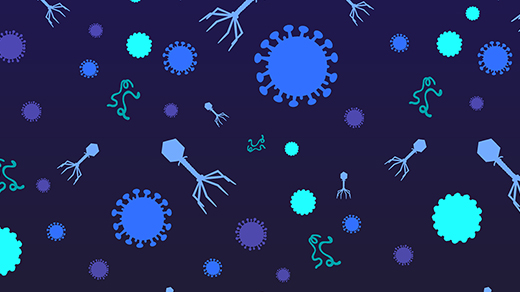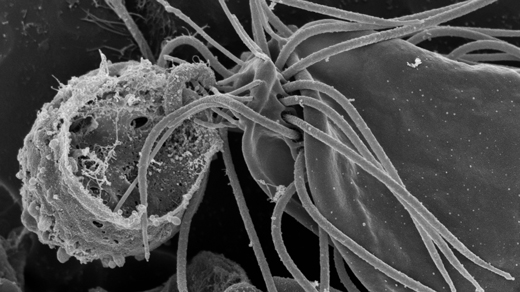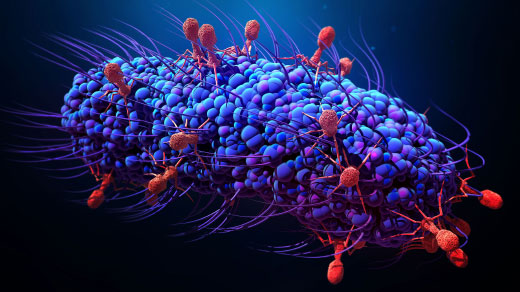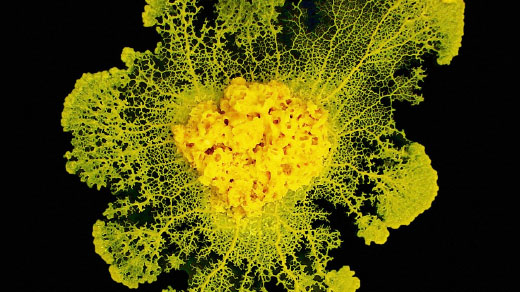What's up in
Microbiology
Latest Articles
Viruses Can Scatter Their Genes Among Cells and Reassemble
Some viruses can replicate without infecting any one cell with all their genes.
Scientists Discover Nearly 200,000 Kinds of Ocean Viruses
New work raises the estimated diversity of viruses in the seas more than twelvefold and lays the groundwork for a better understanding of their impact on global nutrient cycles.
Heat-Loving Microbes, Once Dormant, Thrive Over Decades-Old Fire
In harsh ecosystems around the world, microbiologists are finding evidence that “microbial seed banks” protect biodiversity from changing conditions.
Researchers Rethink the Ancestry of Complex Cells
New studies revise ideas about the symbiosis that gave mitochondria to cells and about whether the last common ancestor of all eukaryotes was one cell or many.
New Squid Genome Shines Light on Symbiotic Evolution
Researchers hope that the genes of a glowing squid can illuminate how animals evolved organs for beneficial bacteria.
What a Newfound Kingdom Means for the Tree of Life
Neither animal, plant, fungus nor familiar protozoan, a strange microbe that sits in its own “supra-kingdom” of life foretells incredible biodiversity yet to be discovered by new sequencing technologies.
‘Broadband’ Networks of Viruses May Help Bacteria Evolve Faster
A newly discovered mechanism may enable viruses to shuttle genes between bacteria 1,000 times as often as was thought — making them a major force in those cells’ evolution.
On Waste Plastics at Sea, She Finds Unique Microbial Multitudes
Maria-Luiza Pedrotti is illuminating the unseen worlds of plastic-eating bacteria that teem in massive ocean garbage patches.
Slime Molds Remember — but Do They Learn?
Evidence mounts that organisms without nervous systems can in some sense learn and solve problems, but researchers disagree about whether this is “primitive cognition.”








